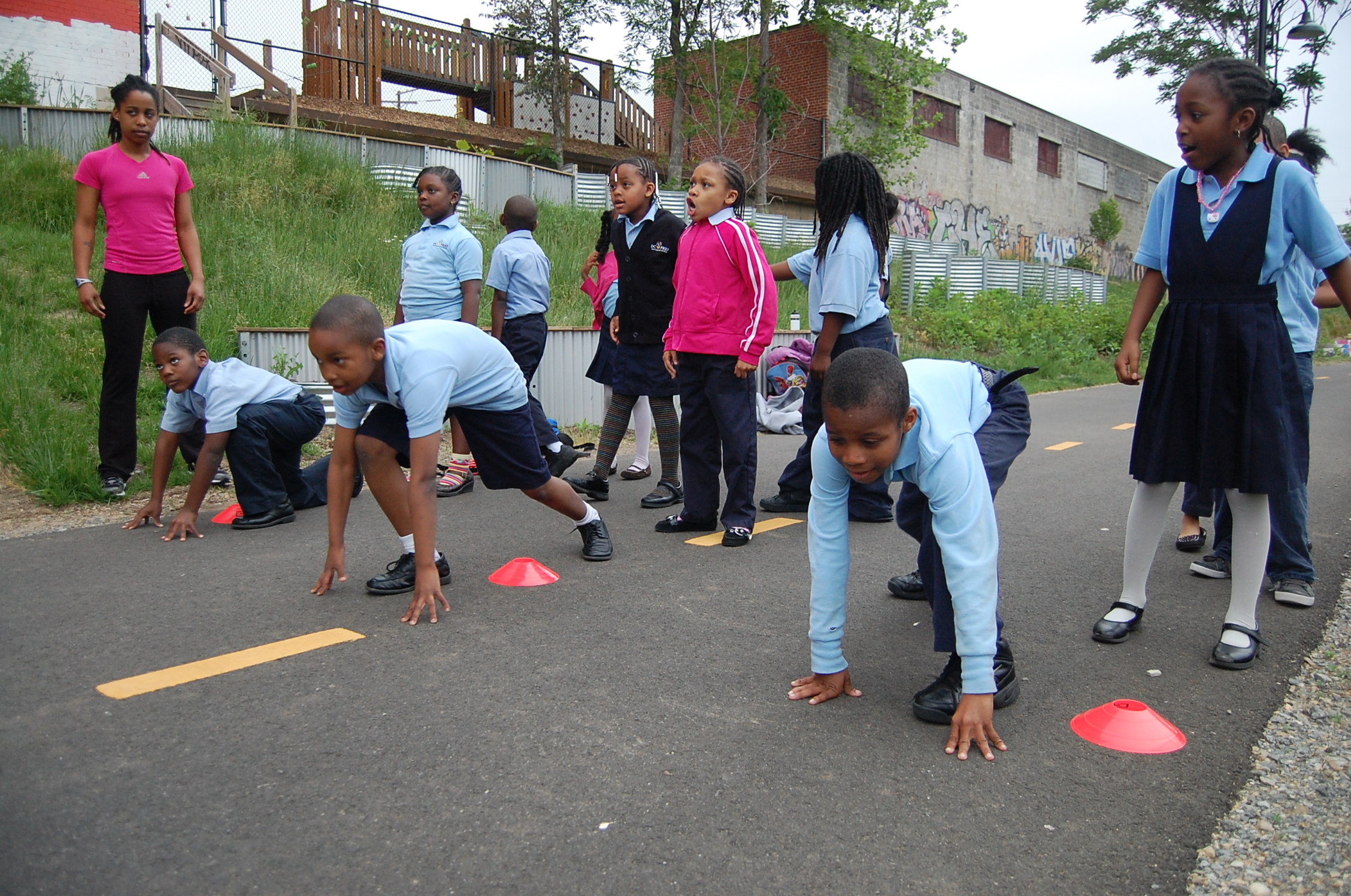Written by guest blogger, Jake Lynch, from Rails-to-Trails Conservancy.
In recent years Rails-to-Trails Conservancy (RTC) has seen trails evolve from being considered purely as recreational facilities to occupying a key role in the relationship between built environments and public health. But building the trails themselves is only half the battle. Longer-term work involves encouraging their use, investing residents and users with a sense of ownership, and making trails a natural, integral part of the community.
To facilitate this relationship, RTC staff must be creative, running programs that, at first glance, seem far removed from their trails mission. For example, RTC staff recently helped students at a D.C. school paint a colorful mural on a trailside wall, next to a vegetable garden. We brought along a fitness instructor who specialized in children’s activities, so the young artists took breaks from painting by running, stretching and racing along the trail. The event began a gradual process of familiarization that the trail is for them, that it connects to their school, and that it offers physical and personal freedom in an environment that can be restrictive.

In Pittsburgh, RTC sponsors students from low-income neighborhoods to join the annual Sojourn bicycle tour. As training, volunteers from Bike Pittsburgh lead rides along local trails. To warm up, they do yoga. It’s a wonderful sight: A group of young black students in the Lion’s Pose as cyclists and joggers cruise by. Bike Pittsburgh also operates a Free Ride Recycled Bike Shop. In areas where being able to afford a bike is a major obstacle, creative initiatives like these have a real impact on the number of people riding for regular trips.

In Spartanburg, S.C., an educational scavenger hunt on the Mary Black Trail is increasing trail usage among students and seniors. Small train sculptures are hidden along the trail; kiosks, signage and iPods transmit historical facts and scavenger hunt clues. Organizers hope to bring regular educational trails trips into the school syllabus.
Across America, rail-trail organizations stage fun runs and races. An underlying purpose of these events is to establish the local trail in the collective mind of the community as a free fitness and recreation facility open to all. Staging events for people who are already active runners does little to address broader health goals, so trail organizers are innovating and expanding their reach. An annual fitness day on the Hurley Trail in New York includes a cycle-spin workshop and Zumba sessions. ‘Trail Mix’ on the W&OD Trail combines biking, walking and the area’s Civil War history, plus live entertainment and sports clinics. The Morgana Run hosts “Walk a Hound, Lose a Pound.”
Trails are the backbone of programs that provide incentives for students to ride or walk to school, ostensibly to reduce vehicle congestion at drop-off and pick-up times. RTC hosts Compton BikeFest, encouraging riding among children in inner-city communities, a focus of anti-obesity efforts. For trails advocates, the key to increasing physical activity is often to make it about anything but the exercise, promoting the financial savings, convenience, accessibility, freedom, social interaction and environmental aspects of riding and biking.